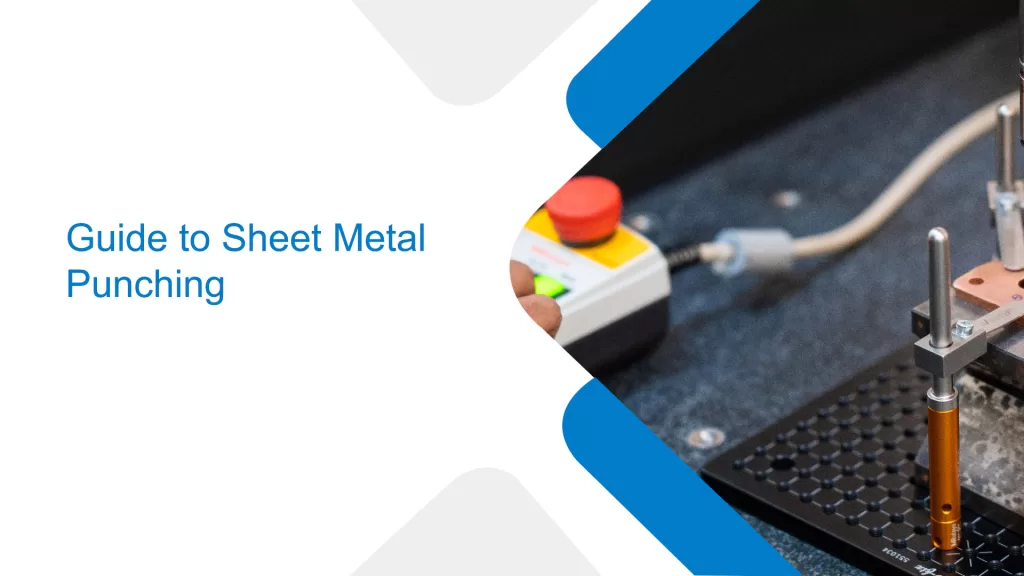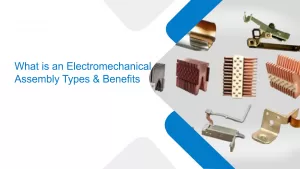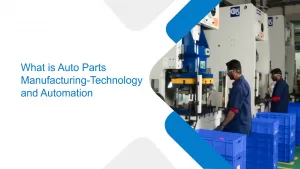Guide to Sheet Metal Punching
- Metal Stamping |
- Sep 10, 2024

Sheet metal punching is a versatile and efficient method that can produce a wide range of items. It is a basic step in precision sheet metal manufacturing. Sheet metal pressing entails imprinting a shape on a surface using pressure or percussion using a steel punch tool and sheet metal stamping dies.
This technology enables the fabrication of holes, forms, and features in sheet metal, making it an essential procedure in industries such as automotive, aircraft, electronics, and construction. Here is the guide to sheet metal punching:
How is sheet metal formed?
An industrial process that presses metal into thin, flat, uniform workpieces yields sheet metal. The apparatus used to punch metal sheets contains a punch and die, which forms and cuts the material.
Industrial punching techniques use compressive force to crush the sheet into the required shape. The method causes an initial deformation of the sheet metal material, followed by a rapid increase in shear stress, which fractures and cuts the material to specification.
The process begins when sheet metal is installed. A punch then slides downward through one side of the sheet metal and enters the die, which is placed on the metal piece’s underside, causing the desired shape to form in the metal workpiece while the remaining metal scrap, a slug, is separated from the new pattern.
The die also provides the required support so the punch can exert maximum force without breaking the metal. The punch and die technique produces exact, error-free metal pieces of any size or shape as specified.
Sheet metal punching:
Sheet metal pressing cuts a portion of the workpiece by applying a controlled force to a metal sheet. Dies and punches are typically used in the process as the tooling system. Usually, the punching procedure leaves the sheet metal workpiece with a hole in it.
Key Features of Sheet Metal Punching Operations
- Punch and Die:
The punch tool presses into the sheet metal in the die cavity below and shears the material to form the desired hole or shape.
- Press machine:
Because great force is necessary for punching, hydraulic or mechanical presses with tons of pressure are utilized.
- Fast turnout:
The punch strokes go up and down swiftly, enabling rapid production. Modern punch presses produce over 100 strokes per minute.
- Tool and die:
Tool and die sets are a collection of standardized punches and dies used to create various hole sizes, louvers, slots, notches, and unique forms.
- Burr formation:
The shearing operation produces a raised burr edge along the top side of the hole, which is removed using deburring techniques.
- High tonnage capacity:
Punching thick materials, such as steel plates, need presses rated for high tonnage to cut and mould without failure.
Benefits of steel metal punching:
Some of the advantages of sheet metal punching are:
- Ability to manufacture holes economically for medium- and large-scale production.
- Cutting operations are relatively inexpensive as long as custom tooling is not required.
- Sheet metal punching is an extremely rapid and efficient operation.
- You can make holes of different shapes and sizes faster.
- Removes the need for secondary forming procedures.
- It is a versatile procedure since it can handle practically every type of metal tolerance.
Tools and Equipment for Punching Sheet Metal:
The correct tools and equipment are necessary to perform sheet metal punching tasks successfully. The punch press machine is the main tool used in sheet metal punching activities.
It comprises a mechanical or hydraulic press, generating the force to punch through the sheet metal. A ram is part of the machine and it retains the punch and exerts force.
Considerations such as maximum sheet size, tonnage capacity, and material handling capability should be made while choosing a punch press for sheet metal punching. It is important to select a machine that satisfies the needs of the desired punching applications.
Numerous tooling options are offered in addition to the punch press for diverse punching applications. Certain hole sizes and forms can be produced with the help of dies, punches, and other equipment.
The thickness of the material, the desired hole size, and the complexity of the shape all influence the tooling selection. Specialized tools can be made to meet specific punching needs.
Distinct kinds of punching sheet metal:
- Piercing:
Piercing is making a hole in sheet metal without taking any material away. The punch is driven into the sheet metal, piercing it yet leaving the material behind. Usually, piercing is done to make holes for screws, rivets, and other fasteners.
- Notching:
Removing a small fragment of material from the edge of sheet metal is known as notching. Notching is generally used to make tabs and other feature notches.
- Slotting:
Creating a long, thin groove in sheet metal is known as slotting. Usually, slots are made using slotting for plumbing lines, electrical wires, and other components.
Bottom line:
Eigen began as a precision metal stamping unit in Bangalore and has since grown to become one of the world’s leading metal stamping service providers. We specialize in creating, designing, and making high-speed sheet metal pressing tools. We offer the best quality products at a limited price.
Ujjwal handles crucial roles like AGM Marketing, researcher, and is an author for KDDL – Eigen. He currently works with Eigen for implementing proven techniques and strategies for marketing plans on online and offline platforms. An expert in efficiently executing SEO, SEM, email marketing, social media marketing, PR marketing, Print campaigns, etc. Ujjwal has coordinated an efficient marketing team on various creative campaigns and programmatic buying to support various digital cross-promotion efforts. Implement efficient search optimization strategies with the help of collateral material and metrics.
In his former years, Ujjwal has years of experience in a managerial role for several reputed companies. His years of experience combined with the flair of writing help him come up with result oriented strategies for Eigen.




